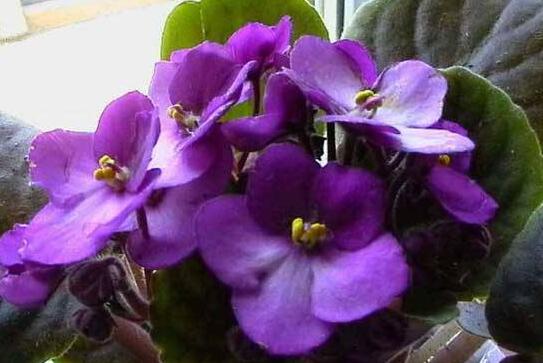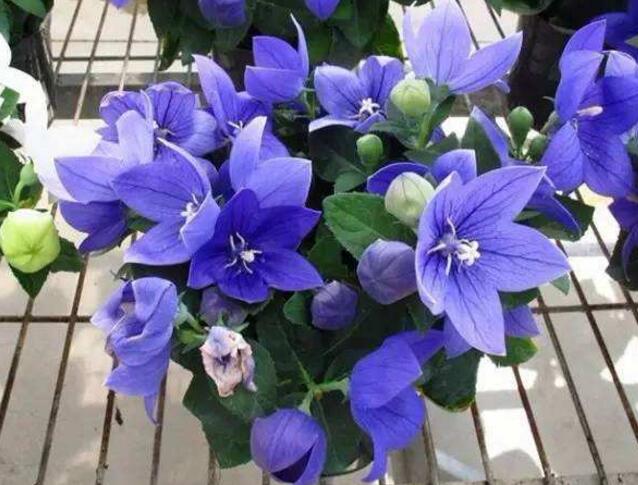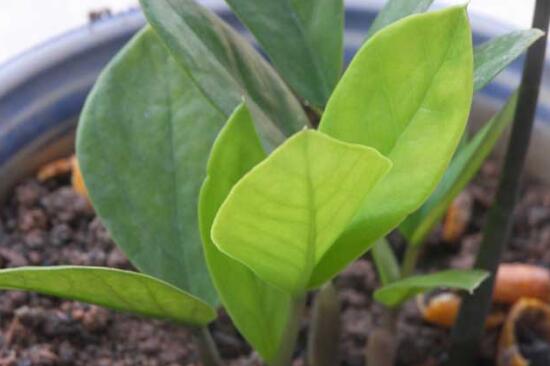How to raise violets, the culture methods and precautions / temperature of violets should be appropriate.
Many people know that the flowers of violets are very beautiful, but there are actually many effects and functions of violets, such as whitening, skin care, heat-clearing and detoxification, so more and more people are going to plant a few pots at home, but they do not know how to raise violets. Today, the editor recommended to you the violets breeding methods and matters needing attention. After understanding, everyone can raise violets well.
How to raise violets

Before we know how to raise violets, we need to know its growth habits. Violet was born in the Mediterranean in Europe. It prefers cool climate to hot and dry weather. It likes good ventilation and does not like closed environment. It has lax requirements on soil, but its drainage is good, and its alkaline soil is the best. It is not suitable to grow in acidic soil; it can endure low temperature and not shade, and likes the environment with good light.
1. Temperature
Violet likes cold weather, its most suitable growth temperature is 15-18 degrees, the best night temperature is about 10 degrees, can not bear high temperature. You can temporarily adapt to temperatures of 5 degrees or even lower, but you can't stay below zero for a long time.
Planting methods and precautions: when raising violets, keep their environment at 18-24 degrees. If the temperature exceeds 27 degrees, it will hinder the growth of violets, so cooling measures should be taken in summer and heat preservation measures should be taken in winter. this is very important in violet culture methods and precautions.
2. Soil
Violet is not strict with the soil, but it needs to have two characteristics, namely, good drainage and good air permeability. The soil had better be neutral or alkaline, do not use acidic soil to grow violets.
Planting methods and precautions: do not use acidic soil species of violets, you can use rotten leaf soil, peat soil or sand soil and other configuration of culture soil, usually pay more attention to loosen the soil, to avoid soil consolidation.
3. Watering
Violet has a general requirement for water, pay little attention to the frequency and amount of watering during the growing period, and it is not too late to rewater the basin soil if it is found to be dry, but when the temperature is low in winter and spring, the amount of watering should be reduced.
Planting methods and precautions: in the cultivation methods and precautions of violets, watering is very important. Every time you water violets, they should be watered thoroughly, but remember to accumulate water and leave it in a well-ventilated sunny place for 3-4 days. Do not water on the leaves.
4. Lighting
Violet has higher requirements for light, it likes places with plenty of light, can not be placed in dark places for a long time, usually provide scattered light to meet its growth needs, but if it is exposed to the sun can grow better.
Planting methods and precautions: when maintaining violets, you should keep them in a ventilated and sunny place, but do not let them be exposed to the sun. Too strong light may cause the leaves to turn yellow, so make sure they have enough light. Don't let the light get too strong.
5. Fertilization
Violet is a fast-growing plant, in its growing period need to pay attention to fertilization, the best ratio of nitrogen, phosphorus, potassium fertilizer is 1:1:1, do not use too much nitrogen fertilizer.
Planting methods and precautions: during the growing period, apply fertilizer to violets every 7-10 days, mainly compound chemical fertilizer; when flower buds appear, mainly phosphorus and potassium fertilizer, pay attention to do not apply fertilizer on leaves or buds.
6. Diseases and insect pests
Any plant is afraid of diseases and insect pests because it affects the health of plants, and violets are no exception. In addition to understanding the cultivation methods and precautions of violets, the most important thing is to prevent diseases.
Planting methods and precautions: violets can be raised in a higher position, so that the ventilation in its environment can be better. In mildew or hot weather, do not let leaves and plants come into contact with Rain Water.
Summary: this paper introduces in detail the cultivation methods and matters needing attention of violets, the most important of which are temperature, watering, fertilization, light, etc., to develop a good planting habit, which can provide the best growing environment for violets. Can successfully raise the violets.
How do you raise violets? Culture methods and matters needing attention of Violet
How do you raise violets? Recently, many friends have asked about the methods and matters needing attention in the cultivation of violets. Therefore, the editor will introduce to you the methods and matters needing attention in the cultivation of violets today.
To grow violets well, let's first learn about the living habits of violets:
Violet, also known as sweet-scented osmanthus, is native to southern Europe. This flower likes cold climate and avoids hot and dry weather. Like a well-ventilated environment, mild climate in winter, but can also withstand a short low temperature of-5 ℃. The suitable temperature for flower bud differentiation is 15 ℃, which is not strict to the soil, but grows well in the soil with good drainage and neutral alkali, and avoids acidic soil. Violet is resistant to cold and shade, afraid of waterlogging, and is suitable for being born in an environment with high position, exposure to sunlight, ventilation and drainage. Avoid muggy heat, it is easy to be harmed by diseases and insects when it is hot and moldy and poorly ventilated.
The culture methods of violets:
Violets should not be planted too closely, otherwise they will cause diseases and insect pests due to poor ventilation. It is suitable to be planted in soil with fertile soil layer and good drainage. The basin soil can be mixed with 2 humus soil, 2 garden soil and 1 river sand. Fertilization is applied every 10 days in the growing season. Nitrogen fertilizer should not be too much, but phosphate fertilizer and potash fertilizer should be applied. Stop fertilizing during flowering and winter. It is common to see that the soil surface is dry and white and should be watered immediately, wet and dry.
Violet likes warm climate in winter, so it is suitable to move indoors. It can endure a short-5 ℃ low temperature, and its reproduction is mainly sowing. In the central part of China, the seeds are usually sown in the open field in the middle of September. The single flower should be selected as the female parent for seed collection. Although the double flower has high ornamental value, it can not bear seeds because of the lack of pistil. If the seed is collected from the potted female parent, the second generation double valve rate is more, which can account for more than 50%. The basin soil should be moist before sowing, cover a thin layer of fine soil after sowing, and no longer water it. If the basin soil is dry within half a month, the basin can be placed in half of the water and moistened from the bottom of the basin. Pay attention to shade after sowing, and seedlings can emerge in about 15 days.
Notes for potted plants:
Selection of ① basin and substrate
As the Violet root group is small, so when planting, the pot should not be too large, according to the plant size to choose the corresponding pot. The substrate of potted plants requires loose, fertile, well-drained, neutral and slightly acidic soil.
② watering and fertilization
The amount of water should be determined according to the growing season, winter and early spring, the temperature is low, watering should not be too frequent, the basin soil should be watered after the soil is dry, and the relative humidity should be kept at about 40%; the temperature should be high in summer, and the relative humidity should be sprayed frequently. The relative humidity is not less than 70%; in autumn, watering decreases with the cool climate. In the growing season, thin and rotten cake fertilizer or liquid fertilizer should be applied every two weeks, but it should be noted that nitrogen fertilizer should not be excessive. After the appearance of flower buds, 0.5% calcium superphosphate was applied twice to make the flowers bright. Be careful not to touch the leaves to avoid decay when watering and fertilizing.
③ temperature and light
The suitable temperature for Violet growth is 18-24 ℃. In summer, the temperature can not exceed 30 ℃, so it is necessary to take shading, cooling and humidifying measures, can not be exposed to strong light, but can not grow too long in excessive shade, resulting in fewer flowers, light color, or even no flowering. Family flower cultivation can be cultivated in a place with scattered light and ventilation. The temperature should not be lower than 10 ℃ in winter.
④ pays attention to prevention and control of diseases and insect pests
Root rot, crown rot, powdery mildew, aphids, mites, thrips and nematodes are easy to occur in cultivation. Attention should be paid to ventilation and disinfection before the use of cultivation substrates. When the above diseases and insect pests are found, relevant pesticides should be sprayed in time.
Violet likes to be cold and cool, cold-resistant and shady, afraid of waterlogging, suitable for living in an environment with high position, exposure to sunlight, ventilation and drainage. Friends who want to plant violets must pay attention.
How to raise Violet Culture methods and matters needing attention
Violet flowers are very popular with people for their beautiful shapes and colors. So do you know how to raise violets? Next, let's take a look at the cultivation methods and precautions of violets.
The culture methods of violets:
1. Soil quality: due to the small root group of violets, the pot should not be too large when planting, and the corresponding pot should be selected according to the plant size. The requirements for soil are not strict, and potted soil requires loose, fertile, well-drained, neutral and slightly acidic cultivated soil.
2. Temperature: like cold climate, avoid dry and hot. Like a well-ventilated environment, mild climate in winter, but can also withstand a short low temperature of-5 ℃. The optimum temperature for flower bud differentiation was 15 ℃.
3. Light and ventilation: Violet is cold-resistant and shady, afraid of waterlogging. It is suitable for being born in an environment with high position, exposure to sunlight, ventilation and drainage. Avoid muggy heat, it is easy to be harmed by diseases and insects when it is hot and moldy and poorly ventilated. Like plenty of sunshine, but also slightly resistant to semi-shade.
4. Water and fertilizer: the amount of water should be determined according to the growing season, winter and early spring, the temperature is low, watering should not be too frequent, it should be watered after the basin soil is dry. In the growing season, thin and rotten cake fertilizer or liquid fertilizer should be applied every two weeks, but it should be noted that nitrogen fertilizer should not be excessive. After the appearance of flower buds, 0.5% calcium superphosphate was applied 1 to 2 times to make the flowers bright. Be careful not to touch the leaves to avoid decay when watering and fertilizing.
5. Diseases and insect pests: root rot, crown rot, powdery mildew, aphids, mites, thrips and nematodes are easy to occur in cultivation. Attention should be paid to ventilation and disinfection before the use of cultivation substrates. When the above diseases and insect pests are found, the relevant pesticides should be sprayed in time.
Points for attention in Violet Culture:
Do not cultivate too dense, otherwise poor ventilation, vulnerable to diseases and insect pests. During cultivation, we should pay attention to fertilization, do not fertilize too much at one time, and apply thin fertilizer frequently, otherwise it is easy to cause overgrowth of plants and affect flowering.
The leaves of violets are thick and resistant to drought, so it is not advisable to drench too much water, and the soil can be kept moist. Too much water will rot the roots. If it is used as a flower bed layout, water should be properly controlled in spring, and mid-ploughing should be carried out to preserve soil moisture, so that the plant is low and compact, and a better ornamental effect can be achieved.
High temperature and humidity in summer should pay attention to the prevention and control of diseases and insect pests. If properly maintained, it can blossom in mid-April. After flowering, it is necessary to cut the flower branches and apply topdressing 1-2 times, so that they can branch again and blossom for the second time from June to July. Good mother plants should be selected for seed collection. Violet plants should be kept away from other cruciferous species in order to prevent interspecific hybridization.
More information
- Prev

How to raise Platycodon grandiflorum in pot, the breeding methods and precautions / sufficient light of Platycodon grandiflorum
Platycodon grandiflorum is a kind of flower grown all over the world, which is highly ornamental, so it is a good choice to raise one for decoration at home. About potted Platycodon grandiflorum how to raise, Platycodon grandiflorum breeding methods and matters needing attention? Next, the editor will take you to learn about it.
- Next

How often is the money tree watered? how to water the money tree? how to water the money tree once a month?
Money tree, native to Africa, is an indoor foliage plant, which not only has an excellent moral, but also has a series of functions to purify the air. It must be good to raise the money tree well, but it is not an easy task, especially in watering and fertilizing. A little carelessness will lead to big problems.
Related
- Fuxing push coffee new agricultural production and marketing class: lack of small-scale processing plants
- Jujube rice field leisure farm deep ploughing Yilan for five years to create a space for organic food and play
- Nongyu Farm-A trial of organic papaya for brave women with advanced technology
- Four points for attention in the prevention and control of diseases and insect pests of edible fungi
- How to add nutrient solution to Edible Fungi
- Is there any good way to control edible fungus mites?
- Open Inoculation Technology of Edible Fungi
- Is there any clever way to use fertilizer for edible fungus in winter?
- What agents are used to kill the pathogens of edible fungi in the mushroom shed?
- Rapid drying of Edible Fungi

